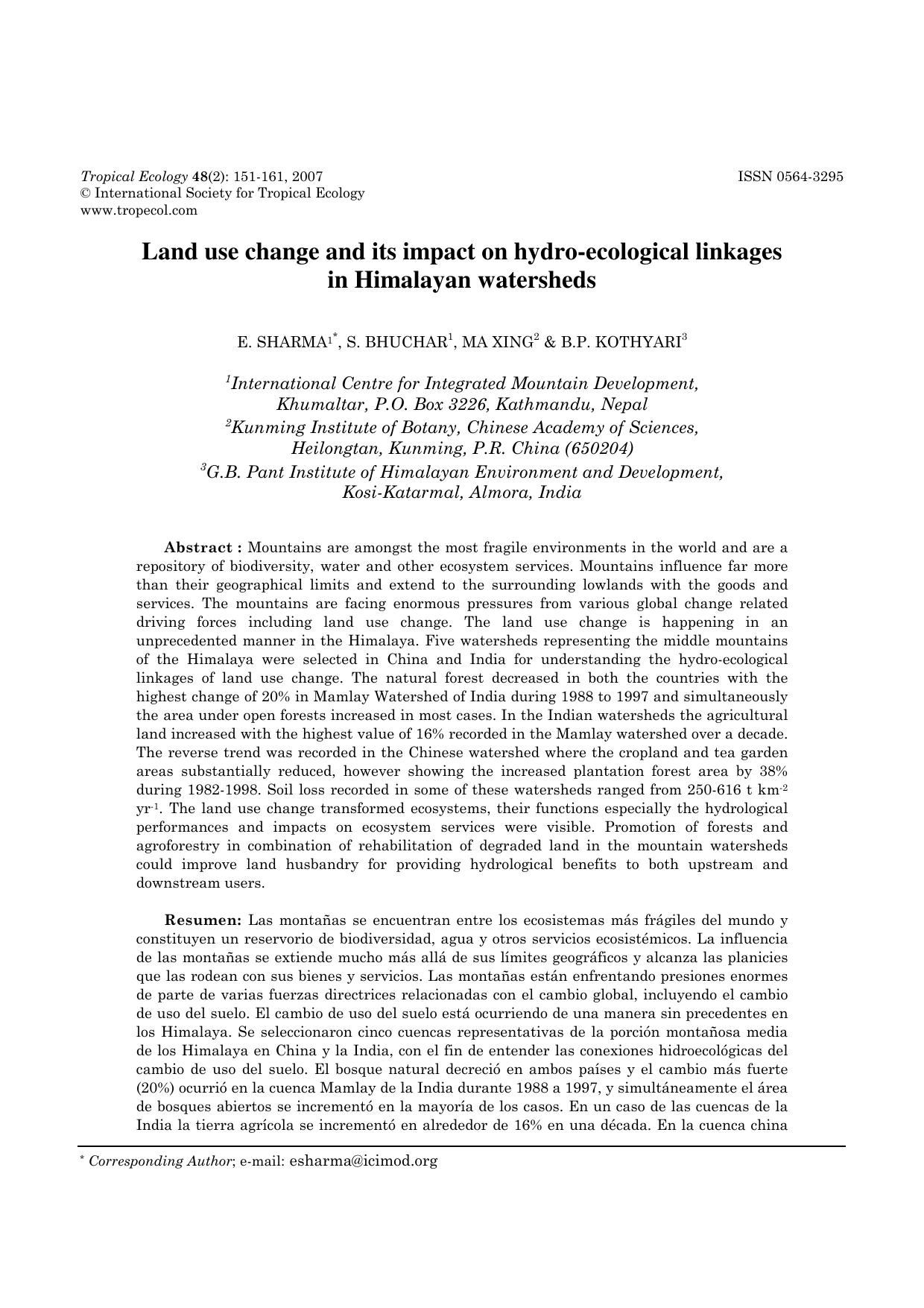Mountains are amongst the most fragile environments in the world and are a repository of biodiversity, water and other ecosystem services. Mountains influence far more than their geographical limits and extend to the surrounding lowlands with the goods and services. The mountains are facing enormous pressures from various global change related driving forces including land use change. The land use change is happening in an
unprecedented manner in the Himalaya. Five watersheds representing the middle mountains of the Himalaya were selected in China and India for understanding the hydro-ecological linkages of land use change. The natural forest decreased in both the countries with the highest change of 20% in Mamlay Watershed of India during 1988 to 1997 and simultaneously the area under open forests increased in most cases. In the Indian watersheds the agricultural land increased with the highest value of 16% recorded in the Mamlay watershed over a decade. The reverse trend was recorded in the Chinese watershed where the cropland and tea garden areas substantially reduced, however showing the increased plantation forest area by 38%
during 1982-1998. Soil loss recorded in some of these watersheds ranged from 250-616 t km-2 yr-1. The land use change transformed ecosystems, their functions especially the hydrological performances and impacts on ecosystem services were visible. Promotion of forests and agroforestry in combination of rehabilitation of degraded land in the mountain watersheds could improve land husbandry for providing hydrological benefits to both upstream and downstream users.
